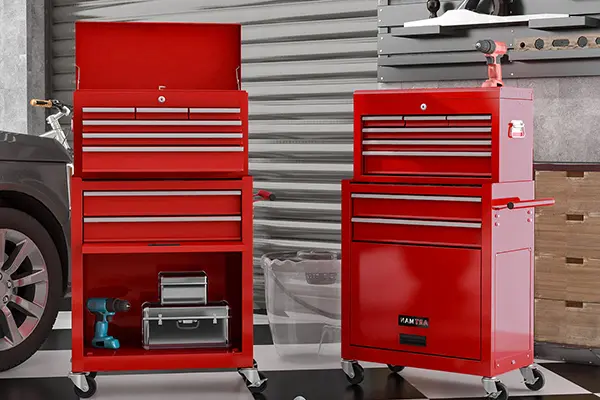Ensuring Security: How to Verify the Safety and Stability of Your Tool Trolleys and Cabinets
Imagine reaching for a trusty tool on your tool cart with cabinet, only to witness a wobbly sway or a drawer failing to stay shut. Suddenly, the once-reliable workhorse becomes a potential safety hazard. Fear not, fellow DIY enthusiasts and professional craftsmen! Ensuring the safety and stability of your tool trolleys and cabinets is crucial, and this guide will equip you with the knowledge to verify their functionality and prevent potential accidents.
Unveiling the Threats: Understanding Potential Safety Risks
Before delving into preventative measures, let’s acknowledge the potential risks associated with unstable or malfunctioning tool trolleys and cabinets:
- Tip-overs: A cart losing balance and tipping over can cause injuries from falling tools or the cart itself.
- Falling objects: Loose drawers or faulty latches can lead to tools tumbling out, posing a risk to your feet or nearby individuals.
- Structural collapse: Overloading the cart or cabinet beyond its weight capacity can result in structural failure, potentially damaging both the tools and causing injuries.
Taking Charge: Verifying Your Tool Trolleys and Cabinets’ Wellbeing
Now that you understand the potential dangers, let’s explore how to verify the safety and stability of your tool trolleys and cabinets:
1. Conduct a Visual Inspection:
- Check for cracks or deformations: Look for any visible cracks, bends, or warping in the metal frame or plastic components of the cart.
- Examine casters and wheels: Inspect the casters for wear and tear, ensuring they roll smoothly and lock securely when needed. Pay attention to any signs of damage or missing parts.
- Scrutinize drawers and cabinet doors: Ensure drawers slide smoothly and close securely, and that cabinet doors shut tightly and latch properly.
2. Test the Stability:
- Apply gentle pressure: Gently push and pull the cart in different directions to assess its overall stability. It shouldn’t wobble excessively or feel flimsy.
- Simulate weight distribution: Load the cart with a representative selection of tools, mimicking your typical usage. Ensure the cart remains stable and doesn’t sag excessively under the weight.
- Test the brakes: If your cart features brakes, test their functionality and ensure they lock firmly when engaged.
3. Review the Weight Capacity:
- Consult the user manual: Locate the weight capacity information for your specific tool trolley or cabinet model. Don’t exceed the recommended limit to avoid overloading and potential structural failure.
- Evaluate your tool weight: Estimate the total weight of your tools and equipment. Ensure it falls well within the cart or cabinet’s designated capacity.
Beyond the Basics: Additional Tips for Maintaining Safety
- Regularly clean and maintain your tool trolleys and cabinets: This includes wiping down surfaces, removing dust and debris from casters, and lubricating moving parts according to the manufacturer’s instructions.
- Avoid overloading: Don’t exceed the weight capacity, and distribute the weight evenly to prevent strain on one side of the cart.
- Invest in quality tool organizers: Utilizing drawer dividers and organizers within the cart or cabinet can help prevent tools from shifting and minimize the risk of falling objects.
- Seek professional repairs when necessary: If you identify any significant damage or malfunctioning components, seek assistance from a qualified professional for repairs rather than attempting DIY fixes.
By following these simple yet crucial steps, you can ensure the safety and stability of your tool trolleys and cabinets, creating a safer and more efficient work environment. Remember, prioritizing safety is an investment in your well-being and the longevity of your valuable tools.
Post time: 02-28-2024




